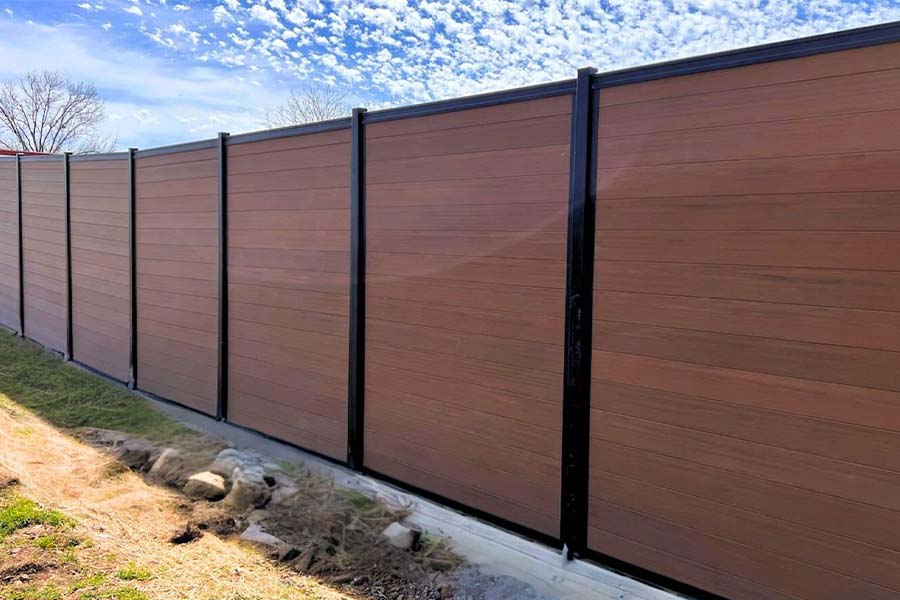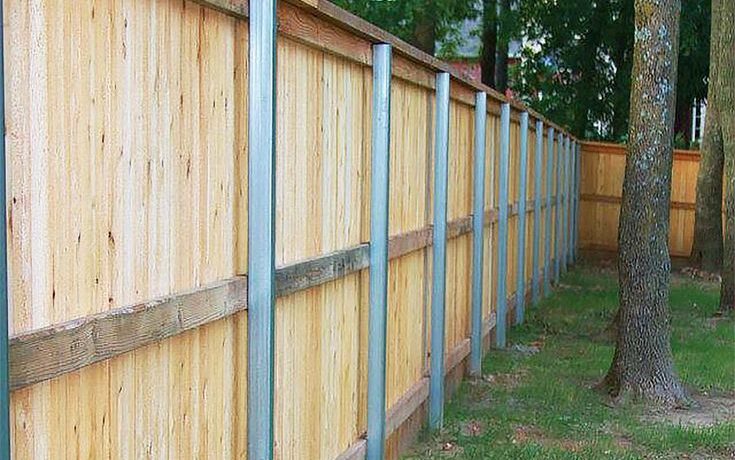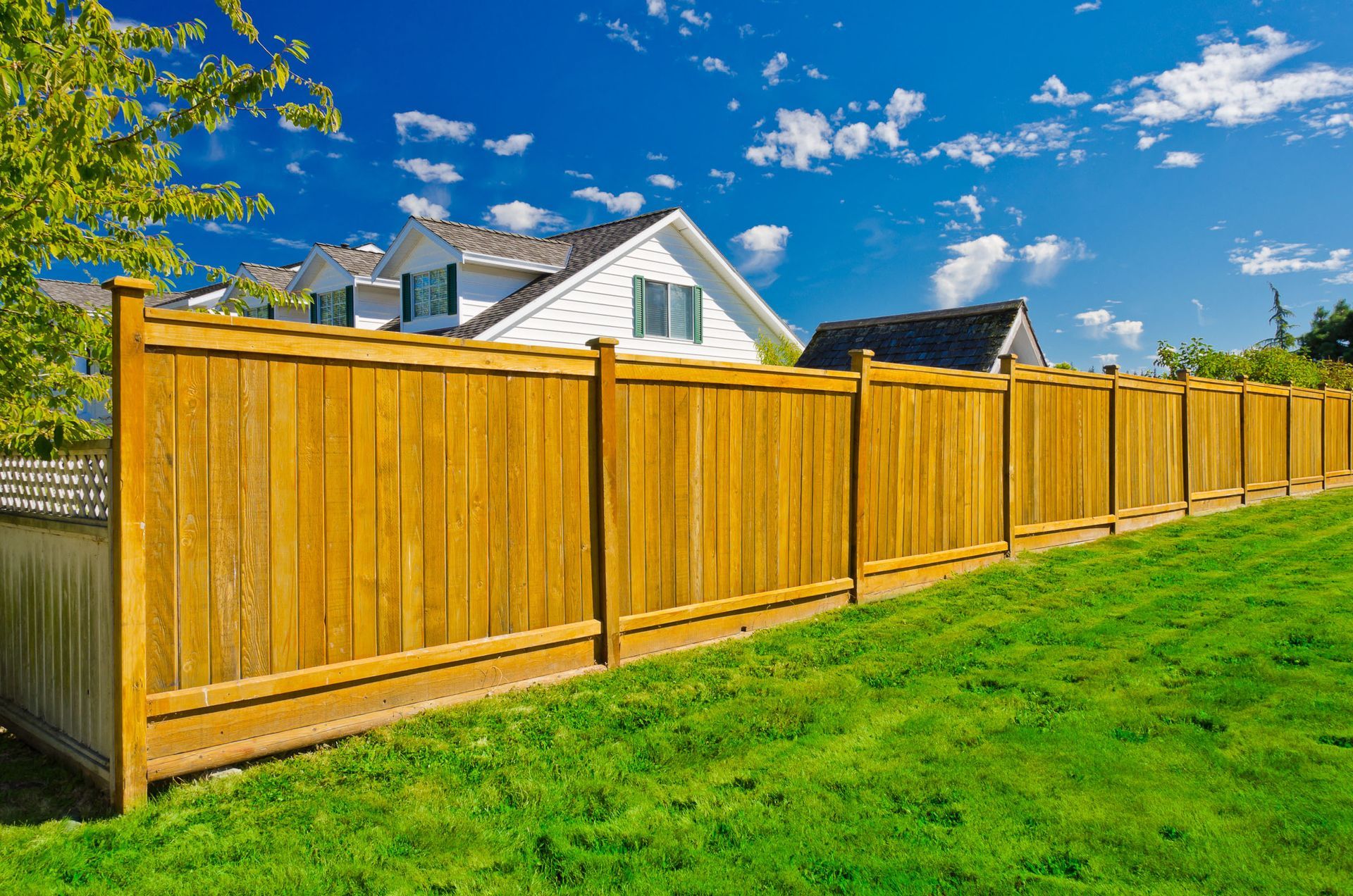Featured
Your fencing is revealed to numerous climate condition year-round, and while it functions as a vital part of your building, it's also among one of the most at risk elements when it involves weather-related damage. Extreme winds, hefty rain, severe temperatures, and UV direct exposure can all take a toll on your fencing's integrity, bring about damage. Thankfully, there are a few actions you can take to protect your fence and extend its life-span. Right here are some efficient approaches to guard your fence from weather-related damage.
Wooden Fences: While wood is a timeless selection for secure fencing, it is at risk to bending, rot, and bug damages, especially in areas with high moisture. Pressure-treated timber or cedar is extra durable, yet regular maintenance is necessary to keep it in good condition. Vinyl Fence: Vinyl is an exceptional choice for those seeking a weather-resistant and low-maintenance fence. It's resistant to moisture, won't warp or crack in the warm, and resists fading from UV rays. Steel Fencing: Wrought iron and light weight aluminum are durable materials for fence, but they require a rust-resistant finish to safeguard them from corrosion as a result of wetness. A safety finish or regular upkeep can stop rust and extend the life of metal fencings. Compound Secure Fencing: Made from a mix of wood fibers and plastic, composite fencings are highly resistant to weather aspects, including dampness, uv, and warm rays. This product offers a balance of toughness and aesthetic charm. Choosing a product fit to your environment will certainly supply much better security for your surround the long term.
Seal or Discolor the Timber: Applying a top quality sealant or discolor to your timber fencing develops a water resistant obstacle that avoids dampness from getting in the timber. It also helps secure the wood from UV rays, which can trigger staining and drying. Reapply Sealer On a regular basis: With time, the protective obstacle of your sealant or discolor can wear down. Relying on your environment, it's a great concept to reapply every one to 2 years to keep the timber safeguarded. This therapy will certainly protect the fence's look, protect against rot, and lengthen its life expectancy.
![]()
For extra security, think about using wind-resistant mesh screens or panels in locations where wind is a substantial worry. This additional layer can assist minimize the pressure that the wind puts in on your fence.
Inspect Water Drainage: Make certain that the ground around your fencing inclines far from the posts. Proper water drainage allows water to stream far from the fence, stopping moisture buildup. Install Drain Equipments: In locations where drainage is a problem, take into consideration adding a French drainpipe or gravel around the base of your fencing messages to redirect water away from the framework. Great drain can stop rot, corrosion, and other forms of weather-related wear and tear.
![]()
![]()
Concrete Grounds: Establish fence blog posts in concrete to stop them from loosening with time due to soil erosion or moving ground. Metal Braces: Adding steel braces to fence posts can give added toughness and reduce the threat of leaning or breaking. Strengthening your blog posts makes certain that your fencing will remain in place, also throughout extreme weather.
For wooden fencings, carefully wash the surface with a moderate cleaning agent to eliminate dust and crud. For plastic fences, use a soft towel and cleaning service to stop build-up. For steel fencings, check for corrosion and sand it off prior to using a fresh layer of paint. Conclusion. Your fencing is a vital attribute of your home, and with the ideal treatment, it can stand up to the obstacles positioned by the weather condition. By picking sturdy products, carrying out routine upkeep, and strengthening weak factors, you can safeguard your fencing from the components and expand its life. Normal evaluations, applying safety coverings, and taking actions to manage dampness and wind exposure will assist make certain that your fence stays strong, practical, and appealing for several years ahead.
- Select Weather-Resistant Products. The products you select for your fencing can have a significant effect on its ability to hold up against the components. Different products are better outfitted to manage certain climate condition. Below's a malfunction of just how various products stand up versus the weather condition:
Wooden Fences: While wood is a timeless selection for secure fencing, it is at risk to bending, rot, and bug damages, especially in areas with high moisture. Pressure-treated timber or cedar is extra durable, yet regular maintenance is necessary to keep it in good condition. Vinyl Fence: Vinyl is an exceptional choice for those seeking a weather-resistant and low-maintenance fence. It's resistant to moisture, won't warp or crack in the warm, and resists fading from UV rays. Steel Fencing: Wrought iron and light weight aluminum are durable materials for fence, but they require a rust-resistant finish to safeguard them from corrosion as a result of wetness. A safety finish or regular upkeep can stop rust and extend the life of metal fencings. Compound Secure Fencing: Made from a mix of wood fibers and plastic, composite fencings are highly resistant to weather aspects, including dampness, uv, and warm rays. This product offers a balance of toughness and aesthetic charm. Choosing a product fit to your environment will certainly supply much better security for your surround the long term.
- Regularly Deal With Wood Fencings. If you have a wood fencing, protecting it from sunshine, moisture, and temperature level changes is crucial. Wood can take in wetness from snow, moisture, or rainfall, creating it to rot and weaken. Right here's just how you can safeguard wood fences:
Seal or Discolor the Timber: Applying a top quality sealant or discolor to your timber fencing develops a water resistant obstacle that avoids dampness from getting in the timber. It also helps secure the wood from UV rays, which can trigger staining and drying. Reapply Sealer On a regular basis: With time, the protective obstacle of your sealant or discolor can wear down. Relying on your environment, it's a great concept to reapply every one to 2 years to keep the timber safeguarded. This therapy will certainly protect the fence's look, protect against rot, and lengthen its life expectancy.

- Mount Windbreaks. Strong winds can create substantial damages to fencings, specifically those made of tall frameworks or lightweight materials. These all-natural barriers can aid deflect wind, preventing direct gusts from damaging your fencing.
For extra security, think about using wind-resistant mesh screens or panels in locations where wind is a substantial worry. This additional layer can assist minimize the pressure that the wind puts in on your fence.
- Make Certain Appropriate Drain Around Your Fencing. Standing water is one of the leading sources of fence damage, specifically for wood fencings. Water can weaken the fencing articles, causing them to rot and wear away more quickly. To avoid this:
Inspect Water Drainage: Make certain that the ground around your fencing inclines far from the posts. Proper water drainage allows water to stream far from the fence, stopping moisture buildup. Install Drain Equipments: In locations where drainage is a problem, take into consideration adding a French drainpipe or gravel around the base of your fencing messages to redirect water away from the framework. Great drain can stop rot, corrosion, and other forms of weather-related wear and tear.

- Trim Overhanging Branches and Vines. Looming tree branches and creeping plants can cause damages to your fencing throughout storms or high winds. To shield your fence, cut any type of branches or plants that hang over or near the fencing regularly.
- Reinforce Fence Posts. Fencing messages are susceptible to changing, leaning, and rotting, specifically during periods of severe weather condition. If your fencing is in a location that ices up or experiences high winds during wintertime, it's essential to strengthen the messages to keep stability.

Concrete Grounds: Establish fence blog posts in concrete to stop them from loosening with time due to soil erosion or moving ground. Metal Braces: Adding steel braces to fence posts can give added toughness and reduce the threat of leaning or breaking. Strengthening your blog posts makes certain that your fencing will remain in place, also throughout extreme weather.
- Normal Examinations and Maintenance. Examine your fence after tornados or hefty rain to look for concerns such as loosened boards, drooping blog posts, or rusted areas. In addition, cleansing your fencing regularly aids keep its condition.
For wooden fencings, carefully wash the surface with a moderate cleaning agent to eliminate dust and crud. For plastic fences, use a soft towel and cleaning service to stop build-up. For steel fencings, check for corrosion and sand it off prior to using a fresh layer of paint. Conclusion. Your fencing is a vital attribute of your home, and with the ideal treatment, it can stand up to the obstacles positioned by the weather condition. By picking sturdy products, carrying out routine upkeep, and strengthening weak factors, you can safeguard your fencing from the components and expand its life. Normal evaluations, applying safety coverings, and taking actions to manage dampness and wind exposure will assist make certain that your fence stays strong, practical, and appealing for several years ahead.
Latest Posts
Plan Your Perfect Event with Twin Falls On-Site Catering
Published Jan 20, 25
1 min read
Enroll in Red Hawk Gastropub Rewards to Get Rewards with Each Visit.
Published Jan 20, 25
1 min read
Quick and Easy Bathroom Transformations
Published Jan 20, 25
0 min read